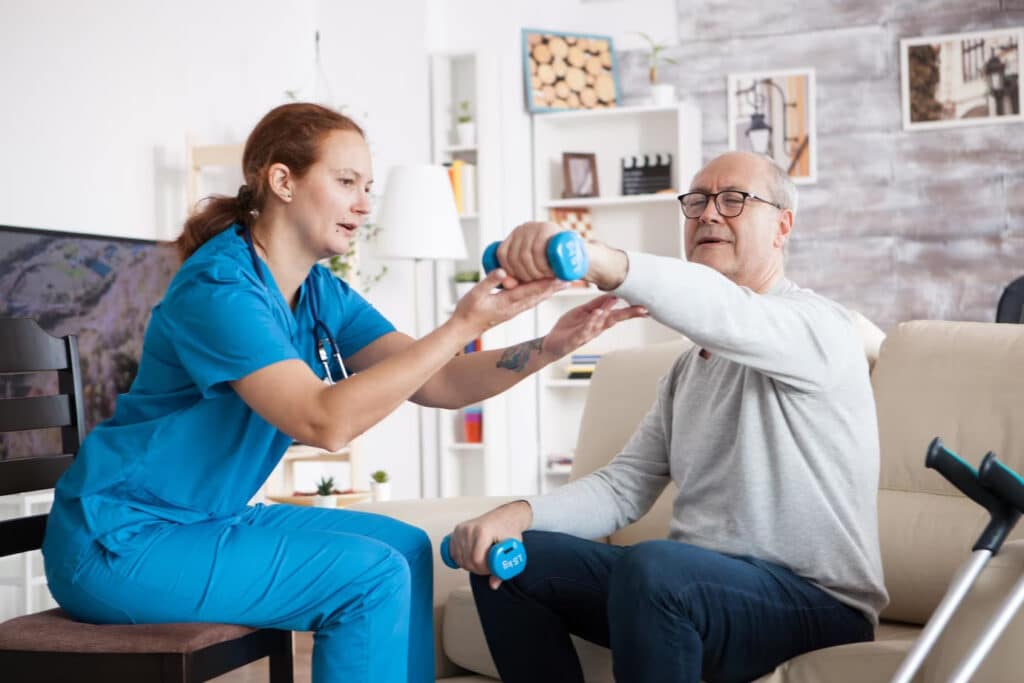In today’s world of senior care, Occupational Therapy in assisted living has become a cornerstone of enhancing residents’ well-being. By focusing on both physical and emotional health, occupational therapy programs promote independence, confidence, and a higher quality of life. At Westmont of Cypress, this holistic approach ensures that residents thrive, embracing new possibilities each day.
Occupational therapists use personalized care plans and innovative tools to help residents regain crucial daily living skills. Beyond physical rehabilitation, therapy programs also boost mental health, encouraging social connections and emotional resilience. If you are considering a facility for yourself or a loved one, understanding the profound impact of occupational therapy can help you make a more informed decision.
Enhancing Daily Living Skills Through Occupational Therapy
When you think about enhancing daily living skills, it’s clear that Occupational Therapy in assisted living plays an essential role in residents’ lives. OT focuses on practical skills like grooming techniques and mobility exercises, helping residents regain independence and confidence. By teaching effective grooming methods, such as using adaptive tools for easier access, residents feel empowered in their self-care routines. Mobility exercises further support physical health, enhancing strength and balance for daily activities.
With individualized care plans, therapists tailor their approach to meet each resident’s unique needs, ensuring that residents are actively involved in daily life. This compassionate support fosters a sense of dignity and a feeling of belonging. Furthermore, integrating advanced healthcare technologies enhances the effectiveness of occupational therapy by offering innovative solutions to support residents.
Promoting Mental Health and Emotional Well-Being
While navigating the challenges of aging, promoting mental health and emotional well-being becomes essential for residents. Occupational therapy in assisted living supports emotional health through various mindful practices:
Mindfulness and Emotional Support
- Mindfulness Practices. Encourage deep breathing, guided meditation, and gratitude exercises.
- Social Engagement. Group activities that foster connection reduce isolation.
- Creative Expression. Art, music, and storytelling allow emotional release and joy.
- Cognitive Activities. Stimulating games and puzzles enhance mental agility.
By focusing on emotional wellness, therapists help nurture confidence and reduce anxiety among residents, leading to an improved quality of life.
For more information on supporting mental health in seniors, you can also explore this helpful guide.

Personalized Care Plans for Individualized Support
Building on the importance of emotional well-being, customized care plans are the heart of Occupational Therapy in assisted living. These plans begin with detailed assessments that highlight each resident’s strengths, preferences, and areas that need support.
Therapists work with residents to create practical and achievable goals that are both empowering and motivating. Whether it’s regaining the ability to cook independently or improving handwriting for communication, tailored approaches bring a renewed sense of purpose. Regular check-ins guarantee these care plans evolve with the resident’s progress.
Incorporating individualized attention into therapy programs strengthens the resident-caregiver relationship, fostering trust and promoting a positive community atmosphere.
Innovative Technology in Occupational Therapy Practices
As technology advances, it significantly impacts Occupational Therapy in assisted living facilities, enriching therapy sessions and making care more dynamic and engaging.
Transformative Technologies
- Virtual Reality. Simulating real-world tasks in a safe environment to practice skills.
- Adaptive Equipment. Tools such as weighted utensils and grab bars for enhanced independence.
- Interactive Software. Memory games and cognitive challenges keep minds sharp.
- Telehealth Services. Offering remote sessions for continuity of care and convenience.
By adopting modern tools, therapists can better track progress, tailor exercises to individual needs, and motivate residents to stay engaged. Learn more about the possibilities of technology in therapy from AOTA’s vision on occupational therapy technology.
Integrating modern technology enhances therapy outcomes, promoting independence while fostering stronger social ties among residents.
Evaluating the Effectiveness of Occupational Therapy Programs
How can we truly measure the success of Occupational Therapy in assisted living environments? Regular evaluation and tracking of residents’ progress provide valuable insights.
Key Assessment Areas
| Assessment Area | Measurement Tools | Expected Outcomes |
| Daily Living Skills | Observational Checklist | Improved independence |
| Cognitive Function | Standardized Tests | Enhanced memory and focus |
| Mobility | Gait Analysis | Increased strength and balance |
| Emotional Well-being | Resident Surveys | Greater satisfaction and engagement |
Feedback from residents and families, combined with therapy assessments, ensures that therapy remains relevant and practical. Integrating tailored therapies can significantly optimize results.
Career Opportunities: Occupational Therapy in Assisted Living
Are you considering a career path in this rewarding field? Assisted Living Occupational Therapy jobs offer a fulfilling opportunity to make a real difference in the lives of seniors. Occupational therapists in assisted living settings create therapy plans, assist residents with skill-building, and help them enhance their independence.
In terms of compensation, the Assisted Living Occupational Therapy salary can vary by location, credentials, and experience. According to the Bureau of Labor Statistics, salaries range from $70,000 to $90,000 per year. This promising career field offers both emotional rewards and professional growth.
If you’re passionate about supporting others, consider openings for Assisted Living Occupational Therapy jobs at Westmont Living or other similar facilities.
You can also explore Indeed’s Occupational Therapy Career Guide for additional insights.
Transforming Lives Through Occupational Therapy
In assisted living communities like Westmont of Cypress, Occupational Therapy in assisted living transforms daily experiences into opportunities for growth, joy, and renewed independence. Residents who are actively engaged in therapy programs experience a 30% improvement in daily living skills, regaining abilities they once thought were lost.
By blending personalized care, emotional support, and innovative technology, occupational therapy ensures that every resident can rediscover their potential. Whether you are considering treatment for yourself, a loved one, or even exploring Assisted Living Occupational Therapy jobs, understanding the profound impact of occupational therapy will open doors to a brighter future.
To experience these life-changing programs, schedule a tour today at Westmont of Cypress Tour or call us at 714-252-7144.
How Do The Costs Of Moving Into A Quality Senior Care Community Compare With The Costs Of Staying At Home?Compare The Costs of Senior Living vs Staying at Home
Frequently Asked Questions
What is the role of an occupational therapist in assisted living?
An occupational therapist (OT) in assisted living helps residents maintain independence and improve their ability to perform daily tasks. They assess each resident’s physical and cognitive abilities and create personalized care plans. OTs often assist with mobility, self-care routines, and adapting environments to enhance safety and comfort. Their goal is to help residents live independently and actively within the community.
What is the role of occupational therapy in the elderly?
Occupational therapy for the elderly focuses on promoting independence, enhancing quality of life, and preventing further decline in physical or cognitive function. Therapists work with seniors to strengthen motor skills, improve balance, and support memory or mental activities. They may also recommend home or environmental modifications to support safer living. Overall, occupational therapy empowers elderly individuals to stay active and engaged in their daily lives.
What are OT activities for elderly people?
OT activities for elderly people are designed to maintain or improve physical, mental, and emotional health. These activities include light exercise programs, fine motor skill games like puzzles, memory-enhancing tasks, or practicing daily routines such as dressing or meal preparation. Therapists also introduce adaptive tools to make tasks easier and safer. The activities are tailored to each individual’s abilities and personal goals.
Does assisted living have therapy?
Yes, many assisted living communities offer therapy services, including occupational, physical, and sometimes speech therapy. These services help residents recover from injuries, manage chronic conditions, and maintain their independence. Therapists often work directly with residents to create customized care plans that meet their unique needs. The availability of therapy may vary, so it’s a good idea to check with individual communities to find out about the specific services they provide.








